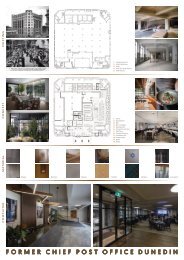Create successful ePaper yourself
Turn your PDF publications into a flip-book with our unique Google optimized e-Paper software.
Knee
11
!"
Moving to the posterolateral aspect of the knee, examine the biceps femoris muscle and
tendon by means of long- and short-axis planes. Proximal images must include careful
evaluation of the myotendinous junction of the two heads of the biceps femoris muscle
because this is a common site of sport-related tears. The biceps femoris tendon can be
followed straight downward from its origin to the fibular head. A small sesamoid - the
fabella - can be occasionally seen in the tendon of the lateral head of the gastrocnemius.
Check the cartilage of the posterior aspect of the lateral femoral condyle using sagittal
planes.
!"
!
!
%
!
*
*
12
*
Legend: arrow, fabella; arrowheads, biceps femoris tendon; asterisks, articular cartilage of lateral
femoral condyle; bfm, biceps femoris muscle; M, lateral meniscus; fh, fibular head; lfc, lateral
femoral condyle
From the position described at point-10, shift the probe up over the tibial nerve to find the
origin of the common peroneal nerve from the sciatic nerve. Follow the common peroneal
nerve in its short-axis throughout the lateral region of the popliteal space down to reach
the fibular head and neck. The peroneal nerve is found posteriorly to the biceps femoris.
Note the divisional (superficial and deep) branches of the peroneal nerve that wind the
fibula passing deep to the peroneus longus attachment.
!
!
*
*
(
! (
!
Legend: arrow, peroneal nerve; arrowhead, tibial nerve; asterisks, articular cartilage of
lateral femoral condyle; bf, biceps femoris muscle; fh, fibular head; fn, fibular neck; lhg,
lateral head of gastrocnemius; lfc, lateral femoral condyle; pl, peroneus longus muscle
7
















